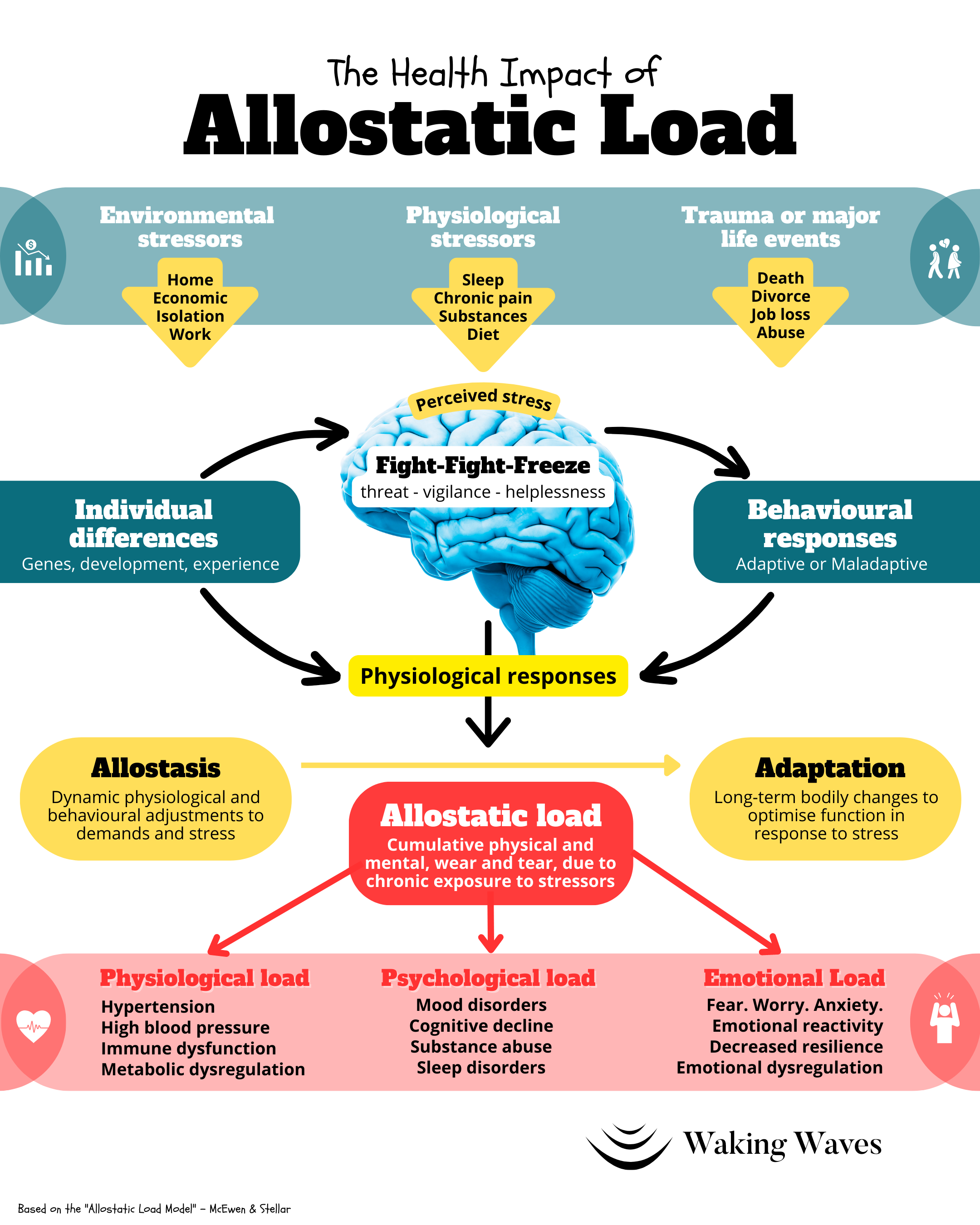The Health Impact of “Allostatic Load”
Humans are built to handle stress. Even with repeated stress - we have the coping strategies, inner resources and resilience to bounce back.
But chronic exposure to stress, whether in our daily life, work or environment takes it toll on our physical, mental and emotional health. This wear and tear is known as “Allostatic Load”.
The term was introduced by renowned Neuroendocrinologist - Bruce McEwen, a leading light in the effect of stress on the brain. He described allostatic load as “the price people pay for adapting to stress”
And it’s a heavy price we pay, impacting us in 3 ways:
❤️🩹 Physiological impact
🧠 Psychological impact
❤️🔥 Emotional impact
This can lead to high blood pressure, and cardiovascular problems. It can disrupt our metabolic health, hormonal balance and cause immune dysfunction. We also can experience sleep and mood disorders, cognitive decline, anxiety and emotional reactivity. To name a few!
Recently, I shared the “3 Stages of Stress” based on Hans Selye’s “General Adaptation [GAS Model]. While both talk about the impact of stress on our physical and mental health, the “Allostatic Load” model is more focused on chronic stress . And its cumulative effect on multiple physiological systems as well as our mental and emotional wellbeing.
To share a little more about this, I’ve adapted the “Health Impact of Allostatic load” into this quick visual guide which you can download below:
[If re-sharing, please tag or reference Waking Waves]
(If re-sharing, please tag / reference Waking Waves keeping visual intact)
The model summarises how we are exposed to environmental and physiological stressors. Also major life events or trauma. And depending on our individual differences (genes, development etc), we have conditioned responses to stress, which may be adaptive or maladaptive.
Depending on how we adapt to these stressors, we gain allostatic load. There are 4 types of allostatic load (see below) which lead to the physiological, psychological or emotional impacts.
4 Types of Allostatic Load
1️⃣ Overactive
We are frequently exposed to our fight-flight-freeze, with elevated levels of stress hormones.
2️⃣ Inadequate
Our allostatic response is insufficient leading to pressure on others systems after a stress response.
3️⃣ Failure to shut off
Following a stress response, we unable to activate rest and recovery, leaving us exposed to elevated stress hormones and arousal.
4️⃣ Inappropriately timed
Stress response activation may happen too easily, too often, or at the wrong times. Disrupting sleep, appetite and mood.
So, how can we reduce the ‘load’?
🚶♀️ Regular exercise for cardiovascular health.
🧘♀️ Mindful Stress Management for regulation.
🥗 Self-caring habits for overall wellbeing.
🗣️ Talking therapies for coping strategies.
🤗 Social support for more connection
🎧
Premium audio courses
🎥
Stress management courses
🎨
30 x Visual guides
📘
High quality magazine
🎧 Premium audio courses 🎥 Stress management courses 🎨 30 x Visual guides 📘 High quality magazine
Moments of Mindfulness: 48 page magazine with premium audio and video courses
To learn how to mindfully manage your stress, begin your free course today or book a call below to discuss how you can support your team.
Wishing you a wonderful day,
Derek
Waking Waves
📧 hello@wakingwaves.com
☎️ book call to discuss courses or coaching





